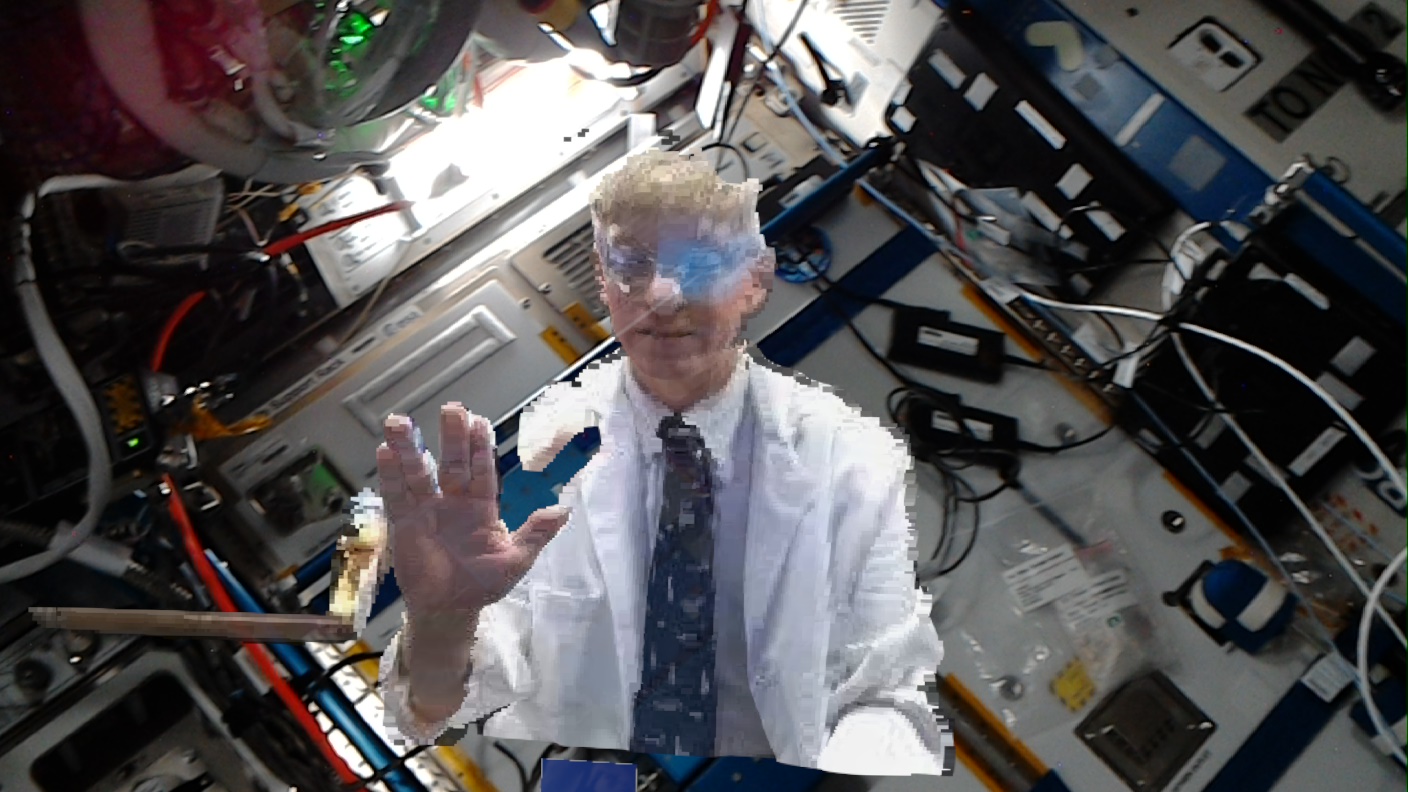It’s been a little over six years since we at Medialist wrote about the possibilities of holoportation. Damals hat Microsoft mit ihrer Demo beeindruckende Möglichkeiten aufgezeigt, die ein wenig an Sci-Fi Filme erinnern. Nun geht es noch ein wenig mehr in die Welt des Science Fiction, denn wenn wir noch die Raumfahrt dazu fügen, sind wir näher an Blade Runner, Star Trek und Co dran, als gedacht.
Demo-Video Holoportation (Source: I3D)
We know them from science fiction movies, the holograms that transcend space and sometimes time and provide help and advice. Now NASA has announced that they are planning something similar by means of holoporation. They have teleported the physician Dr. Schmid and other persons as holograms to the ISS to talk to the crew there. As you would expect, Microsoft again played a central role in this experiment, combined with technology from Aexa Aerospace.

Dr. Josef Schmid auf der ISS (Quelle: NASA)
To make this possible, the teams involved, in this case Dr. Josef Schmid, Aexa CEO Fernando De La Pena Llaca were reconstructed and transferred as 3D models. The ISS astronauts were then able to talk and consult with the “travelers” via the Microsoft Hololens and Aexa software.
“Furthermore, it is a brand-new way of human exploration, where our human entity is able to travel off the planet. Our physical body is not there, but our human entity absolutely is there. It doesn’t matter that the space station is traveling 17,500 mph and in constant motion in orbit 250 miles above Earth, the astronaut can come back three minutes or three weeks later and with the system running, we will be there in that spot, live on the space station.” – Dr. Josef Schmid
Dr. Schmid, a medical doctor, was excited about the possibility of this new type of telemedicine, and NASA is now planning to use Holoporation more in the future to connect with the crew of the ISS. Work is also currently underway on the possibility of sending holograms of the crew to Earth.
According to a NASA press release, the topic of haptics will also play a major role in the future, as they would like to combine the mixed reality possibilities with haptic feedback to allow the ISS team to work hand in hand with their colleagues on Earth.
While there are still major latency issues, as the farther the crew in space gets from the transmitter on Earth, the greater the delay, NASA adds that it is working on that. But even beyond space, this experiment could be a huge leap forward for telemedicine, because having a doctor right in your own home still beats pure communication via a screen and webcam.
What do you think about the possibilities of holoporation? Would you use them?
Post Picture: NASA

